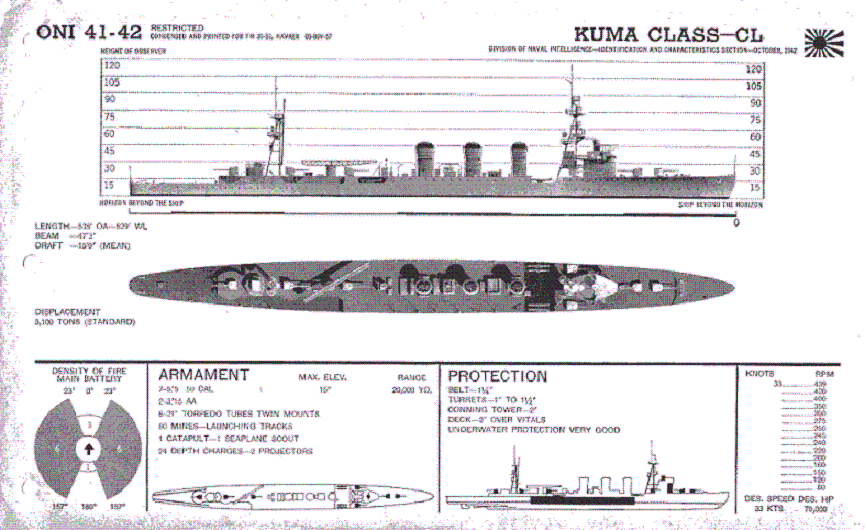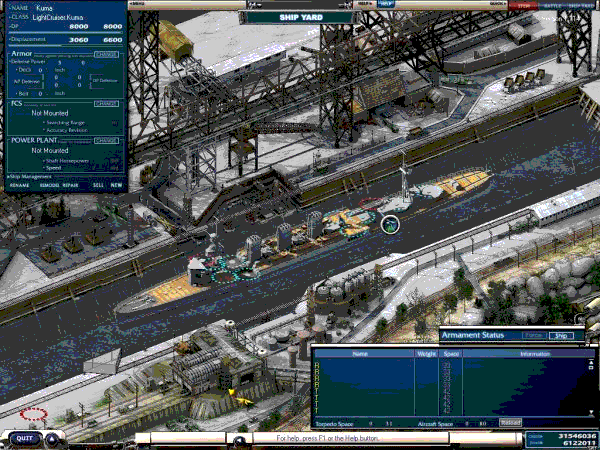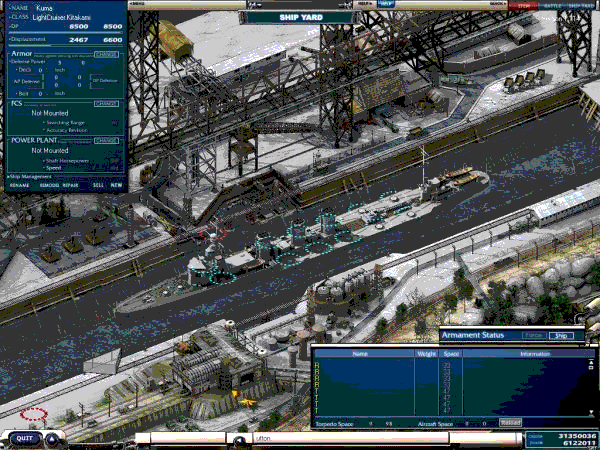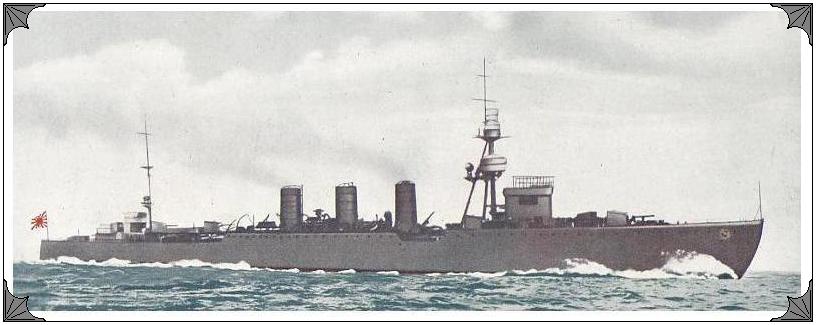
Imperial Japanese Navy - KUMA class Light Cruiser ==========================================================================
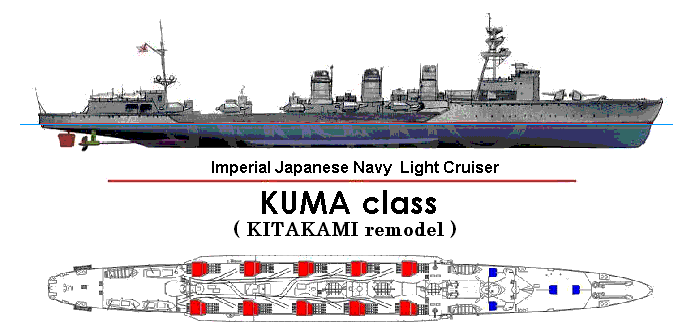
Kuma was the lead ship of the five vessels in the Kuma-class of light cruisers and was intended for use both as a long-range, high speed scout ship, and also as a command vessel for destroyer or submarine flotillas. Kuma was named after the Kuma River in Kumamoto prefecture, Japan.
The Kuma class light cruisers were the end product of a compromise between an ocean going scout ship and an improved version of the Tenryu class. The goal was the production of an intermediate class cruiser which could do both scout and flotilla assignments. The class name sake, the Kuma, was laid down in August, 1918, and was soon followed by four other sister ships.
Despite the success of the Tenryu-class high speed light cruiser design, the Imperial Japanese Navy felt that they would be outgunned by the larger US Navy Omaha-class of light cruisers then under development. The Kuma-class was the successor to the Tenryu-class, based on a larger hull that could accommodate larger guns, and was intended for both high speed scouting missions, and destroyer or submarine flotilla command assignments.
However, the rapid development of naval aviation and submarine warfare in the 1930s quickly made this plan obsolete. Although the Kuma-class cruisers were never to fulfill their original design objective, the design provided to be useful in combat operations ranging from the Aleutian Islands to the Indian Ocean.
The Kuma-class hull design was based on a 5,500 ton nominal displacement, and proved so versatile that it became the standard upon which all future light cruisers in the Japanese navy would be based.
With the development of the long range oxygen-propelled Type 93 "Long Lance" torpedoes in the 1930s, the Imperial Japanese Navy drafted plans to create a special "Night Battle Force" of torpedo-cruisers. The idea was based on Japan's success in the naval Battle of Port Arthur in the Russo-Japanese War. As the new Type 93 torpedoes had a range longer than that of contemporary battleships main guns, the concept was to have a high speed strike force attack an enemy fleet at night with a massive and overwhelming barrage of torpedoes. Major surface combatants would follow up at dawn to finish off the wounded enemy.
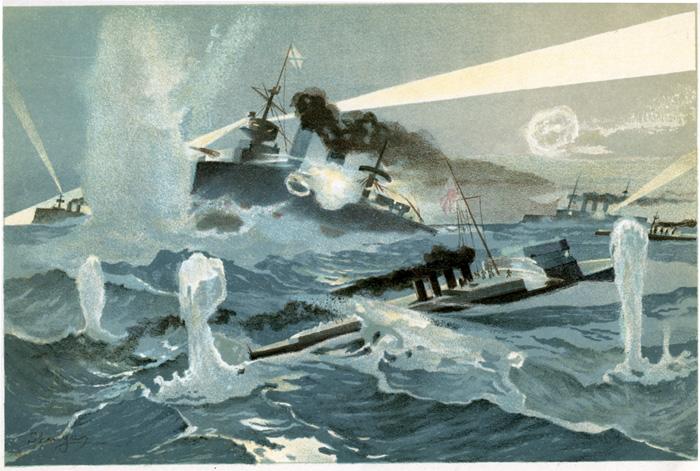
Before the war, the Japanese navy had practiced night fighting religiously. They had also conducted aggressive maneuvers in severe weather that resulted in the loss of men but reinforced the ability to fight in a coordinated fashion regardless of the circumstance. Japanese optics were substantially better than American, as were Japanese star shells, which illuminated enemy ships at night. In comparison during the Battle of Savo Island, only six of the forty-four star shells fired by American vessels worked. The Japanese also used searchlights to their fullest advantage, sometimes blinding the crews of opposing ships. The tactic when approaching an enemy force at night was simple; get within torpedo range, utilize these weapons first, and then engage with guns.
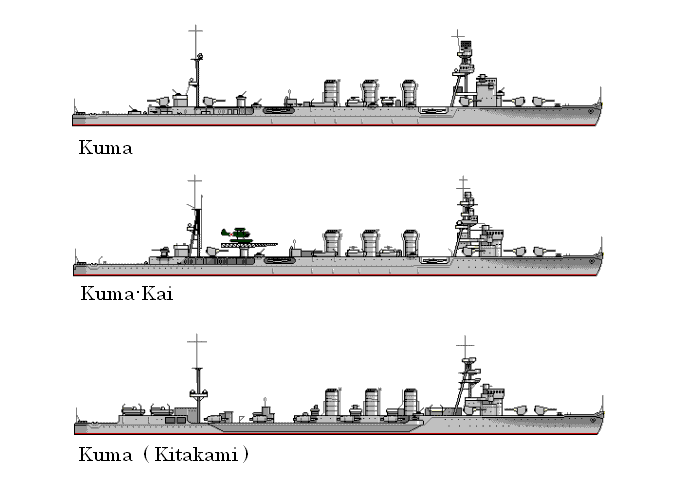
From their completion in late 1920 through to late 1921, the ships went occassional modernizations and conversions. The first ship to experience such a modification was the Kiso, which was outfitted with an aft located rotating take-off platform. While no plane ever used the platform, the Kiso retained a unique forward and flat surfaced superstructure shape which differentiated her from her sisters..
Only the Kuma and Tama were equipped with catapults and the necessary cranes to handle aircraft. All but one of the five ships were sunk during the Pacific War.
Kitakami (meaning "spirit of the north") and Oi of this class are interesting in that they were taken in hand for modification as... torpedo boats on steroids (for want of a better designation). Kitakami was given 32 and Oi 40(!) x 24" tubes. These ships would have been very bad news in a night fight, but they spent most of their time up in the Aleutians, and so far as I know they never fired a combat shot from their tubes.
In language :
Japanese - Kita is Japanese for "north."
German - Kita is short for Kindertagesstätte (kindergarten) in German
English - KITA is short for Kick In The Ass in English.
Serbian - Kita is one of the many names for the word penis. (see also 'pink torpedo')
Tagalog - Kita is short for Mahal Kita, which means "I love you" in Tagalog.
In music :
Kita is also the stage name of Sampsa Astala the drummer of the Finnish hard rock band Lordi (the monsters of finland).
=================================================================================
NB: The above text has been collected / excerpted / edited / mangled / tangled / re-compiled / etc ... from the following online sources :
IJN - KUMA class Light Cruiser - wikipedia article #1
IJN - KUMA class Light Cruiser - wikipedia article #2
IJN - KUMA class Light Cruiser - wikipedia article #3
the term 'KITA' in language - wikipedia article #4
IJN - KUMA class Light Cruiser - www.globalsecurity.org
IJN - KUMA class Light Cruiser - www.combinedfleet.com
